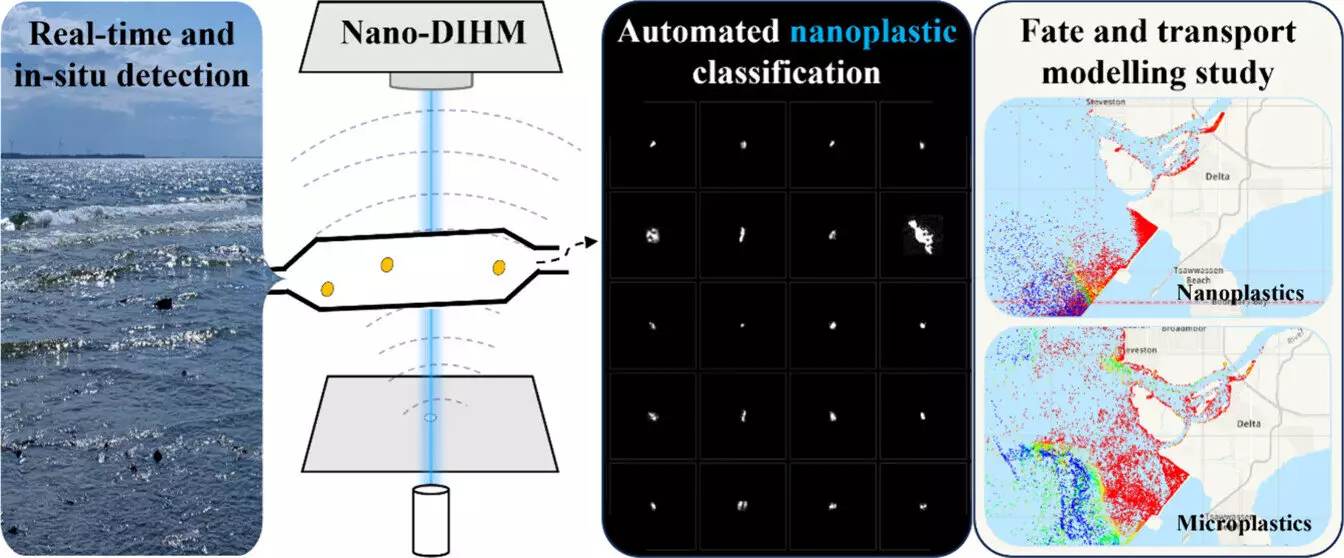A recent study led by a team of researchers at McGill University has introduced groundbreaking technology capable of identifying and analyzing nanoplastics in water. Unlike microplastics, which are visible to the naked eye and range from 1 micrometer to 5 millimeters in size, nanoplastics are minuscule at just a single nanometer in diameter. This innovative approach has the potential to transform how we combat plastic pollution in aquatic ecosystems.
According to the United Nations Environment Program, the world sees the equivalent of approximately 2,000 garbage trucks worth of plastic waste entering our oceans, rivers, and lakes every day. Despite these staggering statistics, the detection and assessment of nanoplastics have posed significant challenges due to limitations in current detection methods. This new technology, enabled by artificial intelligence, provides a solution for real-time monitoring and analysis of plastic pollution.
Dubbed as “AI-Assisted Nano-DIHM,” this nano digital in-line holographic microscopy harnesses the power of artificial intelligence to automatically detect and differentiate between nanoplastics and microplastics within waterborne particles. The lead author of the study, Parisa Ariya, affirms that this technology can even identify coated particles, offering a comprehensive understanding of plastic pollution in aquatic environments. The ability to pinpoint pollution “hotspots” with precision will streamline efforts to address environmental contamination more effectively.
The preliminary findings from the application of AI-Assisted Nano-DIHM in Lake Ontario and the St. Lawrence River are promising, showcasing its ability to identify and analyze nanoplastics in complex environmental samples. Developed in collaboration with the National Research Council of Canada, this technological breakthrough signals a new era in environmental monitoring. With the capacity to revolutionize how we combat plastic pollution, this advancement holds immense potential for safeguarding our planet for future generations.
The introduction of the AI-Assisted Nano-DIHM technology marks a significant milestone in the fight against plastic pollution. Its real-time detection capabilities and precise analysis of nanoplastics demonstrate a promising future for environmental conservation efforts. As we continue to innovate and implement cutting-edge solutions, we move one step closer to a cleaner, healthier planet for all.


Leave a Reply